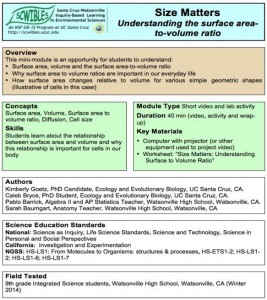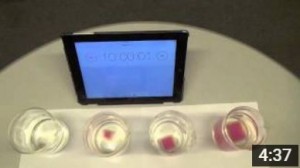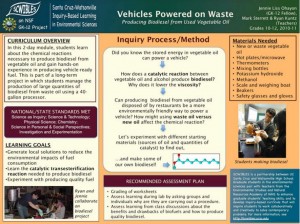 Understanding the Surface Area-to-Volume Ratio
Understanding the Surface Area-to-Volume Ratio
by Caleb Bryce, Kimberly Goetz, Pablo Barrick and Sarah Baumgart
The surface area-to-volume relationship is important for the function of both living things (ex: lung anatomy, tree roots, cell size, brain vascularization) and many human-made objects (ex: car radiators, air conditioning units). By understanding that surface area increases at a slower rate than volume as objects get larger, students can appreciate: why small cell size is advantageous; why plants benefit from a branched network of stems, leaves and roots; and why a variety of everyday objects are shaped and sized the way they are.
In this module, students learn: 1) About the relationship between surface area and volume, 2) Why this relationship is important for cells in our body.
Docs: fulltext.docx presentation.pptx worksheet.docx worksheetkey.docx
Keywords: HS-ETS1.B, HS-LS1, HS-LS1.B, HS-LS1.F, HS-LS1.G, surface area, volume



